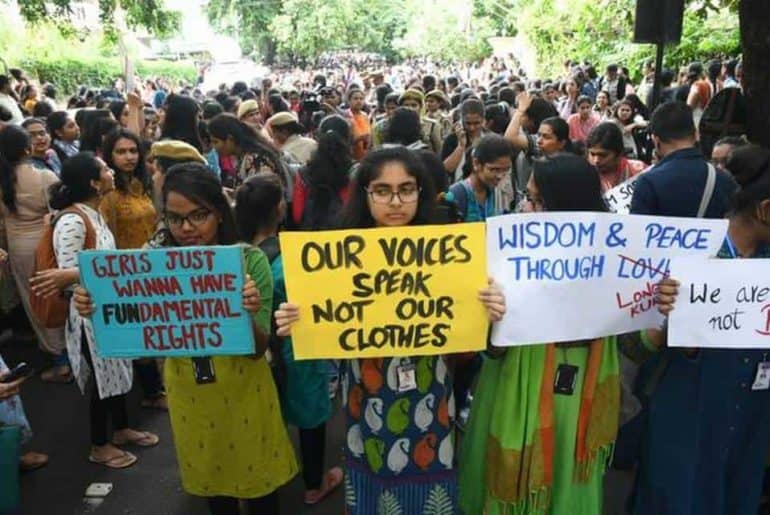The tote bags, the kurtas, the jhumkas, the sandals, the Sarojini of it all!
Diversity is possibly the primary thing that counts as a niche when it comes to DU. While it is claimed proudly, the inherent urge of wanting to belong and recognize another as one of your own has quite conveniently led to one of the most diverse and heterogeneous institutions developing its own separate, sense of style.
Beginning with the one that has aesthetic pages in a universal chokehold, the tote bag. While, in my own humble opinion, backpacks are more convenient, tote bags have gained popularity by targeting the need to be seen as individuals. Instead of a generic-looking backpack of primary colors and zips, tote bags can be customized to reflect your politics, your interests, or your favorite Taylor Swift lyric. (Also, for us introverts, isn’t it convenient to have something to hold?)
This arm accessory, which goes well with everything, is frequently paired with a kurta. It can be simplistic or bold, plain or intricate, and not expensive. From Sarojini to Lajpat, shops abound in every color and design you can think of, all for a low price (lower still, if you know how to haggle).
And of course, no good outfit is complete until it is complemented by the right footwear. Flip-flops, sandals, and sports shoes are the most prevalent kinds on any varsity, and with good reason. People often underestimate just how much of college life is essentially just walking. And as much as I’d like to show up in fabulous boots, just the idea of having to endure that pain that excruciating is enough to make me reconsider. Style loses yet another battleground to comfort and sandals reign as the supremely preferred and situationally appropriate choice of shoes.
Once your basics are good to go, in comes jewelry. Rings, bangles, oxidized jhumkas, the works. Just pop on one (or all) before leaving your house and you will have succeeded in guising yourself as a DU student.
And despite all these, the best part of the DU aesthetic is its affordability. Of course, you’re free to turn up in your Louis Vuitton but know that Sarojini is going to the showstopper. While money doesn’t dim entirely here (or anywhere), any judgement you might get from strangers in the corridors does not exist.
It’s impressive how the massive student body has found a style in which they can all come together and exist as one, while also retaining their individual identities and celebrating them as often as they can.
Naina Priyadarshi Mishra




